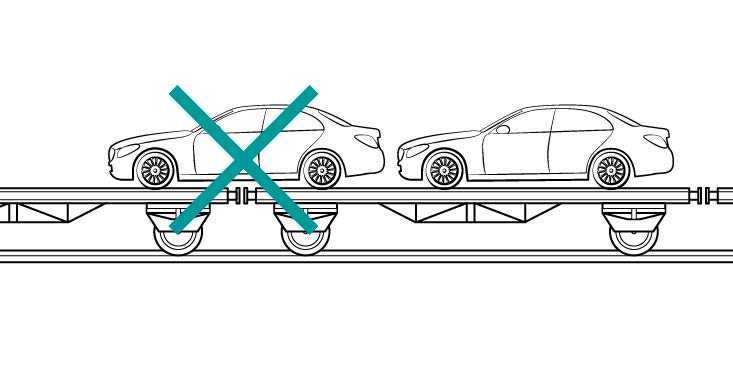Mercedes-Benz E-CLASS SEDAN 2023 Tow Starting
With its cutting-edge engineering and complex technologies, the 2023 Mercedes-Benz E-Class Sedan is not the best vehicle to start a tow or be towed in the traditional sense. The car has sophisticated technological systems and an automated transmission, which could be harmed by towing. It’s important to follow the manufacturer’s instructions if the E-Class Sedan needs to be relocated without the engine running, like in the event of a breakdown or battery failure. When utilizing a flatbed tow service, Mercedes-Benz usually advises against damaging the drivetrain, gearbox, or electrical components. This method complies with the exacting standards of upkeep and care that a high-end car like as the E-Class Sedan requires while guaranteeing the safety and integrity of the car’s intricate parts.
2023 Mercedes Benz E-Class Specs, Price, Features, Mileage (Brochure)
Tow Starting or Towing Away
Permitted towing methods (not plug-in hybrid)
Damage from automatic braking
If one of the following functions is activated, the vehicle will brake automatically in certain situations:
- Active Brake Assist
- Active Distance Assist DISTRONIC
- HOLD function
- Active Parking Assist
To avoid damage to the vehicle, deactivate these systems in the following or similar situations:
- During towing.
- In a car wash.
Mercedes-Benz recommends transporting your vehicle in the case of a breakdown, rather than towing it away. For towing with both axles on the ground, use a tow rope or tow rod. Do not use tow bar systems.
NOTE
Damage to the vehicle due to towing away incorrectly
- Observe the instructions and notes on towing away.
Vehicles with rear-wheel drive
| Permitted towing methods | |
| Both axles on the ground | Yes, for a maximum of 31 miles (50 km) at 31 mph (50 km/h) |
| Front axle raised | No |
| Rear axle raised | Yes, if the steering wheel is fixed in the centre position with a steering wheel lock |
MATIC vehicles
| Permitted towing methods | |
| Both axles on the ground | Yes, for a maximum of 31 miles (50 km) at 31 mph (50 km/h) |
| Front axle raised | No |
| Rear axle raised | No |
Towing with a raised axle: towing should be performed by a towing company.
Towing the vehicle with both axles on the ground:
- Observe the notes on the permitted towing methods.
- Make sure that the battery is connected and charged.
Observe the following points when the battery is discharged:
- The vehicle cannot be started.
- The electric parking brake cannot be released or applied
- Vehicles with automatic transmission: the transmission cannot be shifted to position i or j.
- Vehicles with automatic transmission: if the transmission cannot be shifted to position or if the display does not show anything, transport the vehicle. A towing vehicle with lifting equipment is required for vehicle transportation.
NOTE
Damage due to towing away at excessively high speeds or over long distances The drivetrain could be damaged when towing at excessively high speeds or over long distances.
- A towing speed of 30 mph (50 km/h) must not be exceeded.
- A towing distance of 30 miles (50 km) must not be exceeded.
WARNING
Risk of an accident when towing a vehicle that is too heavy.
If the vehicle to be tow-started or towed away is heavier than the permissible gross mass of your vehicle, the following situations can occur:
- The towing eye may become detached.
- The vehicle/trailer combination may swerve or rollover.
- Before tow-starting or towing away, check if the vehicle to be tow-started or towed away exceeds the permissible gross mass.
If a vehicle has to be tow-started or towed away, its permissible gross mass must not exceed the permissible gross mass of the towing vehicle.
- Information on the permissible gross mass of the vehicle can be found on the vehicle identification plate.
- Vehicles with automatic transmission: do not open the driver’s door or front passenger door; the transmission otherwise automatically shifts to position j.
- Install the towing eye.
- Fasten the towing device.
NOTE
Damage due to incorrect connection of the tow bar.
- Only connect the tow rope or tow bar to the towing eyes.
- Deactivate the automatic locking mechanism
- Do not activate the HOLD function.
- Deactivate the tow-away alarm.
- Deactivate Active Brake Assist.
- Vehicles with automatic transmission: shift to the position.
- Release the electric parking brake.
WARNING
Risk of accident due to limited safety-related functions during the towing process
Safety-related functions are limited or no longer available in the following situations:
- The vehicle is switched off.
- The brake system or power steering system is malfunctioning.
- The energy supply or the onboard electrical system is malfunctioning.
When your vehicle is towed away, significantly more effort may be required to steer and brake than is normally required.
- Use a tow bar.
- Make sure that the steering wheel can move freely before towing the vehicle away.
NOTE
Damage due to excessive tractive power If you pull away sharply, the tractive power may be too high and the vehicles could be damaged.
- Pull away slowly and smoothly.
Loading the Vehicle for Transport
- Observe the notes on towing away.
- Connect the towing device to the towing eye to load the vehicle.
- Vehicles with automatic transmission: shift the automatic transmission to the position.
- Vehicles with automatic transmission: the automatic transmission may be locked in position j in the event of damage to the electrical system. To shift to i, provide the on-board electrical system with power.
- Load the vehicle onto the transporter.
- Vehicles with automatic transmission: shift the automatic transmission to position.
- Use the electric parking brake to secure the vehicle against rolling away.
- Only secure the vehicle by the wheels. Vehicles with ADS PLUS (Adaptive Damping System PLUS)
WARNING
Risk of an accident when transporting vehicles with Adaptive Damping System PLUS When transporting vehicles with Adaptive Damping System PLUS, the vehicle/trailer combination may begin to rock and start to skid.
- Load the vehicle correctly onto the transporter.
- Secure the vehicle on all four wheels with suitable tensioning straps.
- Do not exceed the maximum permissible speed of 35 mph (60 km/h) when transporting.
NOTE
Damage to the vehicle from securing it incorrectly
- After loading, the vehicle must be secured on all four wheels. Otherwise, the vehicle could be damaged.
- A minimum distance of 8 in (20 cm) upwards and 4 in (10 cm) downwards must be kept to the transport platform.
- Secure the vehicle on all four wheels after
loading.
4MATIC vehicles/vehicles with automatic transmission
- Make sure that the front and rear axles come to rest on the same transportation vehicle.
NOTE
Damage to the drive train due to incorrect positioning of the vehicle
- Do not position the vehicle above the connection point of the transport vehicle.
Towing eye storage location
The towing eye is located under the trunk floor.% Depending on the vehicle version, the towing eye is in a different position in the boot.
Installing and removing the towing eye
- Press the mark on cover 1 inwards and remove.
- Screw in the towing eye clockwise as far as it will go and tighten.
- After removing the towing eye, snap cover 1 into the bumper.
NOTE
Damage to the vehicle due to incorrect use of the towing eye When recovering the vehicle by towing it out using the towing eye, the vehicle may be damaged.
- Use the towing eye only for towing or unhooking the vehicle.
- Do not use the towing eye for towing out during recovery.
Tow-starting the vehicle
Vehicles with automatic transmission
NOTE
Damage to the automatic transmission due to tow starting
The automatic transmission may be damaged in the process of tow-starting vehicles with automatic transmissions.
- Vehicles with automatic transmissions must not be tow-started.
FAQ
No, tow starting is not recommended due to the automatic transmission and complex electronic systems.
The recommended method is to use a flatbed tow truck to prevent damage to the vehicle.
Towing with the front wheels on the ground is not advised as it can damage the transmission and drivetrain.
Engage the parking brake, put the car in neutral, and ensure all electronic systems are turned off.
For long distances, it’s safest to use a flatbed tow truck.
Improper towing can void certain aspects of the warranty, especially if it leads to mechanical damage.
It depends on the specific model and its towing capacity. Consult the owner’s manual for guidelines.
Contact a professional towing service and inform them that the vehicle requires flatbed towing.
The vehicle is equipped with designated towing points, which should be used for towing to prevent damage.
No, towing in a parking position can damage the transmission. The vehicle should be in neutral during towing.
The electronic parking brake must be disengaged before towing to prevent damage.
If towing is necessary, it should be done at low speeds, preferably not exceeding 30 mph.
Towing, especially if not done properly, can adversely affect the vehicle’s electronic systems.
Mercedes-Benz may recommend specific towing services or providers; it’s best to check with a local dealer.
Towing with a flat tire should be done with caution and preferably on a flatbed to avoid further damage.
Useful Link
View Full User Guide: Mercedes-Benz E-CLASS SEDAN 2023 User Manual
Download Manuals: https://www.mbusa.com/en/owners/manuals
2023 Mercedes Benz E-Class Specs, Price, Features, Mileage (Brochure)


